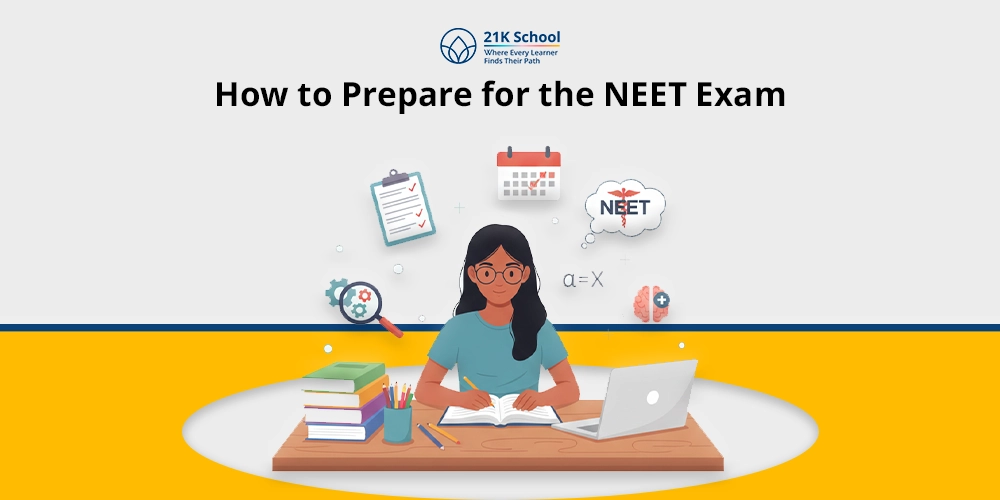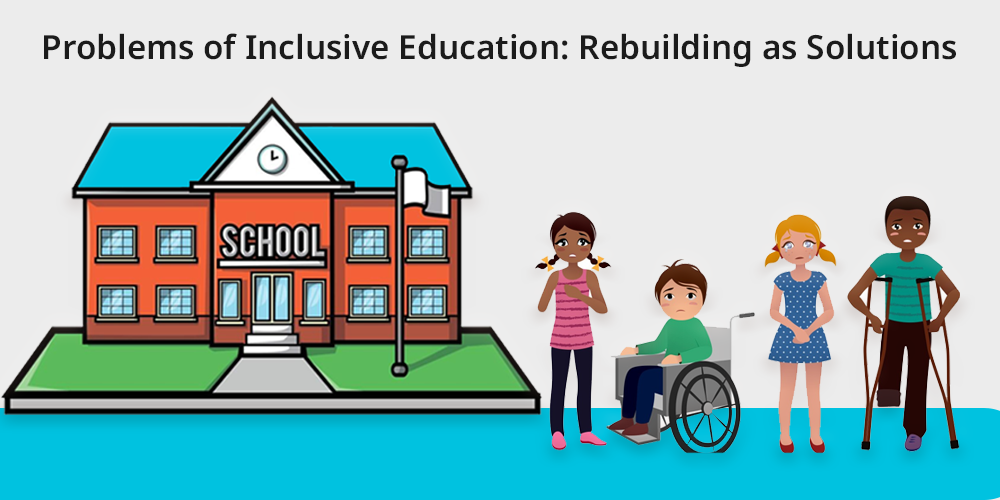
Mainstream classrooms become more accessible when aligned with inclusive education. These spaces welcome all learners with various physical, intellectual, social, emotional, linguistic or other conditions.
Quality education belongs to each child while they receive support from a nurturing academic environment. The optimization of this idea faces multiple significant implementation difficulties despite its inclusive efforts and commitment to equality.
Practicing implementation of inclusive education proves much more intricate than the foundational principles described.
The article examines 10 documented barriers in inclusive education before proposing strategies to help this method work better.
Contents
- 10 Problems with Inclusion of Special Education
- 1. Devoid of Trained Teachers
- 2. Lack of Resources
- 3. Difficulties in Managing Classrooms
- 4. Restricted Individual Attention
- 5. Poor Methods for Assessment
- 6. Parental Restrictions and Concerns
- 7. Lack of Cooperation among Employees
- 8. Cultural and Language Barriers
- 9. Rigid Curriculum
- 10. Courses on Inclusive Education
- Suggested Solutions for Issues in Inclusive Education
- 1. Equip Teachers with Inclusive Training
- 2. Allocating Funds By Government Bodies
- 3. Enhance Classroom Support and Collaboration
- 4. Utilize Flexible Educational Methods
- 5. Strengthen Parent-School Communication
- 6. Encourage Teamwork Among School Staff
- 7. Embrace Cultural and Linguistic Diversity
- 8. Accommodate Students with Different Learning Needs
- 9. Integration into Future Teacher Training Programs
- Wrapping Up: Traverse into Inclusivity
10 Problems with Inclusion of Special Education
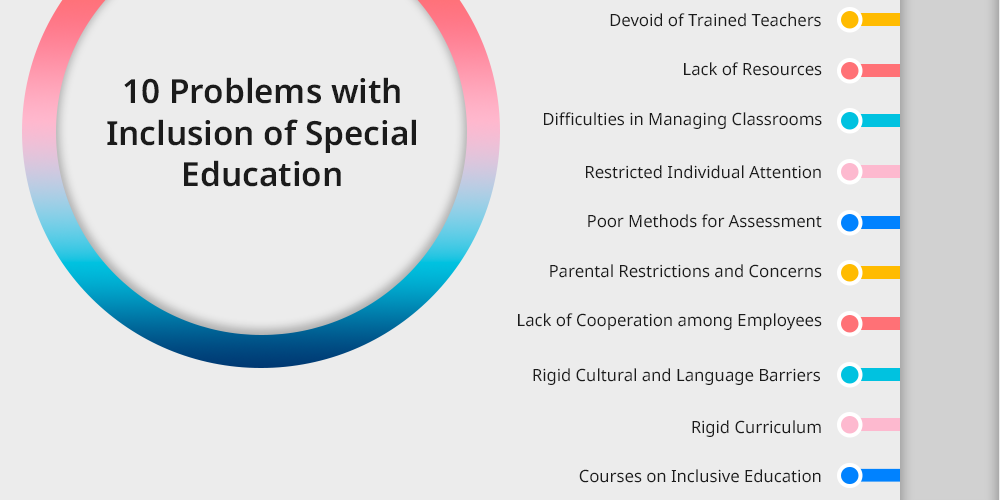
Inclusion can have varied understanding for different people. This depicts that inclusive education fosters an environment of learning where every learner is served without discrimination.
Since the model includes approaches for students, irrespective of their disabilities, abilities, and learning preferences, it has some challenges.
1. Devoid of Trained Teachers
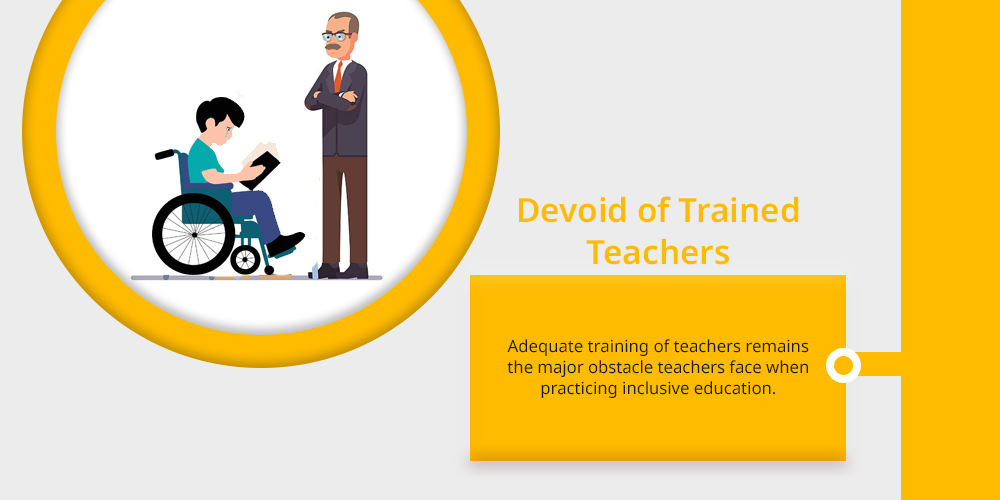
Adequate training of teachers remains the major obstacle teachers face when practicing inclusive education.
Teachers experience low preparedness for different student centered learning needs since they lack proper special education training.
The existing gap results in poor teaching methods by undermining student disability. This produces decreased performance and teacher spirit across the classroom.
2. Lack of Resources
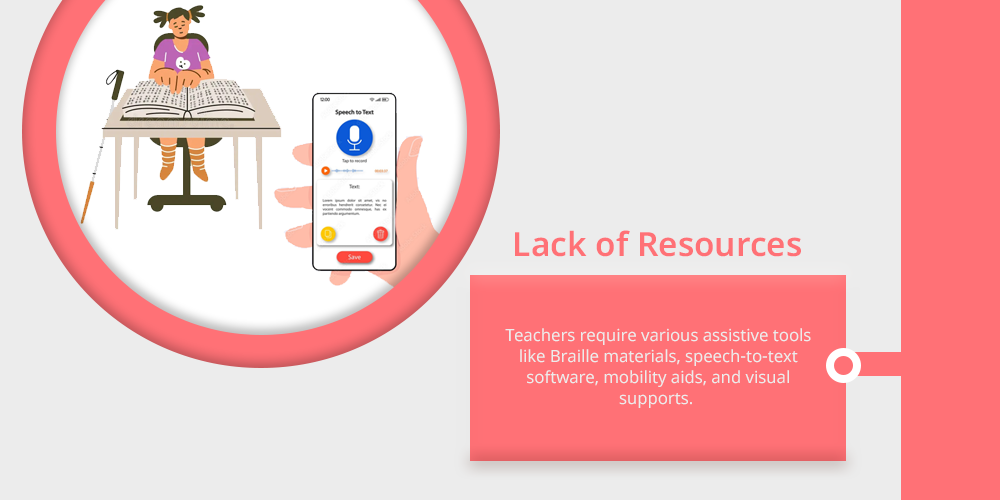
The lack of required resources has a substantial negative impact on the successful implementation of inclusive education practices.
Inadequate provision of essential resources exists in numerous schools particularly in rural regions and schools without enough funding.
When implementing inclusive education teachers need particular tools and suitable technologies to build learning solutions for students’ individual needs.
Teachers require various assistive tools like Braille materials, speech-to-text software, mobility aids, and visual supports.
3. Difficulties in Managing Classrooms
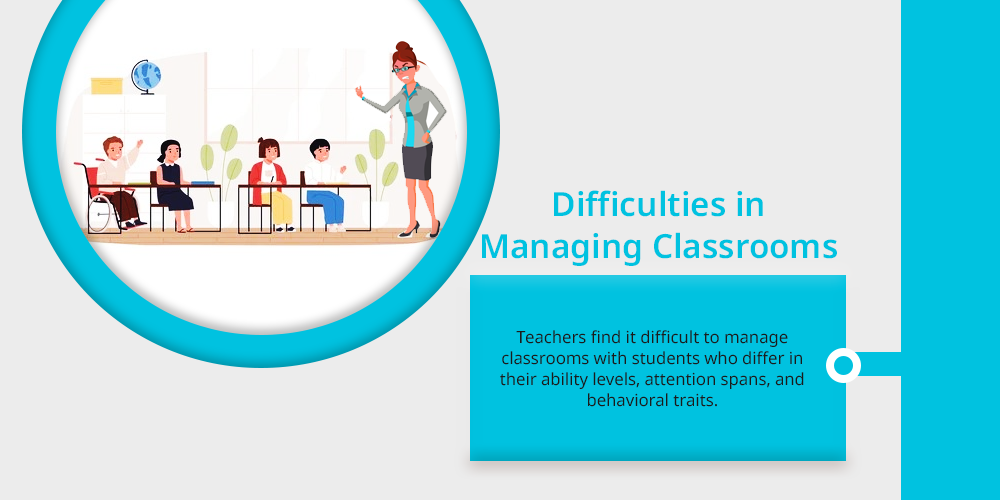
Teachers find it difficult to manage classrooms with students who differ in their ability levels, attention spans, and behavioral traits. Because of which, they need to handle multiple lesson plans together with classroom management duties.
It is a priority for educational staff to deliver equal educational support to all students. Lack of assistance from teaching assistants or co-educators renders this task impossible to manage.
4. Restricted Individual Attention
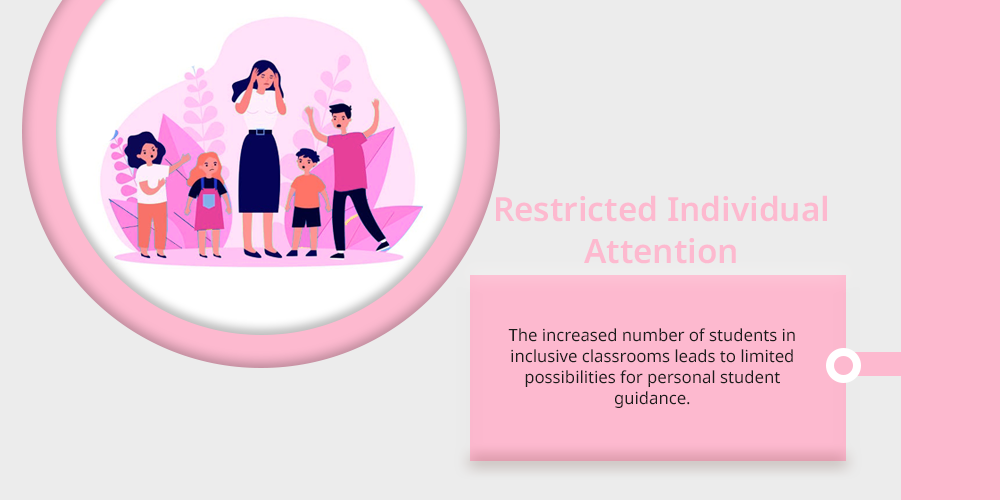
The increased number of students in inclusive classrooms leads to limited possibilities for personal student guidance.
The crowded classroom environment makes it challenging to deliver individualized educational support and modern teaching methods that special students need.
These students tend to face academic and social delays because of the classroom environment.
5. Poor Methods for Assessment
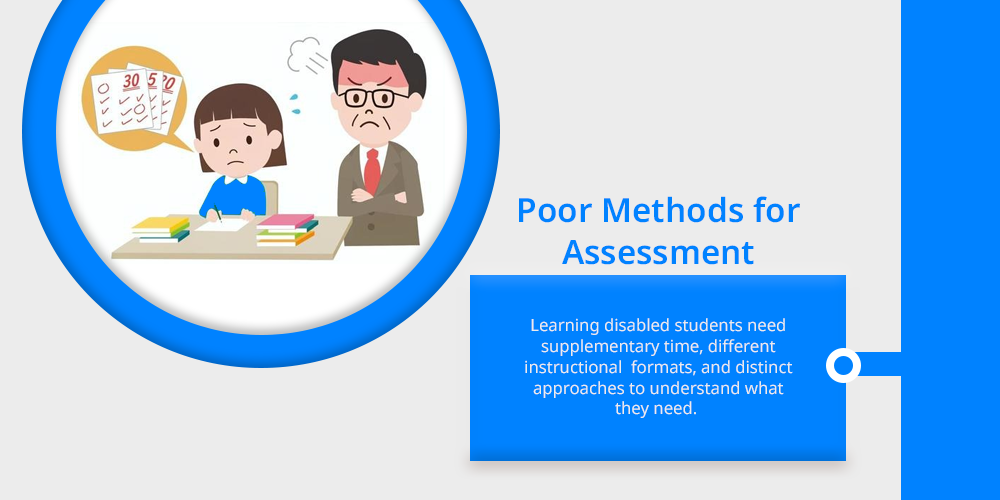
The assessment tools designed for standardization purposes exclude supportive practices for inclusive educational settings.
Learning disabled students need supplementary time, different instructional formats, and distinct approaches to understand what they need.
Students receive false evaluation of their educational progress because schools lack formative assessment tools.
We as newbies often find ourselves stuck when trying to understand the difference between assessment and evaluation. Go through the above piece to raise your awareness about both of them.
6. Parental Restrictions and Concerns
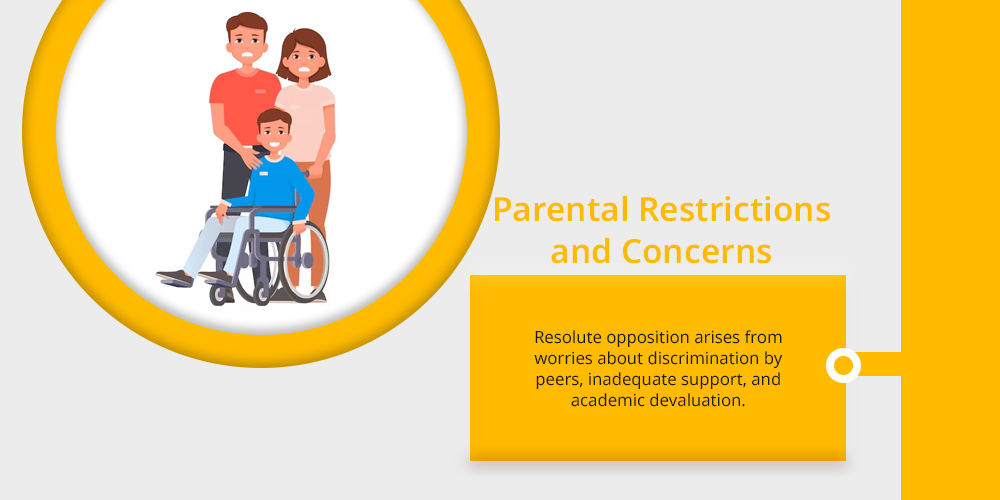
Parents typically express apprehensions regarding school placements for their children regardless of whether they have special needs.
Resolute opposition arises from worries about discrimination by peers, inadequate support, and academic devaluation.
In such sensitive environments, theoretical education alone can not develop students into their best. Therefore, it becomes the responsibility of parents to educate them with the benefits of peer-to-peer education and support every learner.
Some parents who do not have children with disabilities voice their worries about educational harm to their children.
7. Lack of Cooperation among Employees
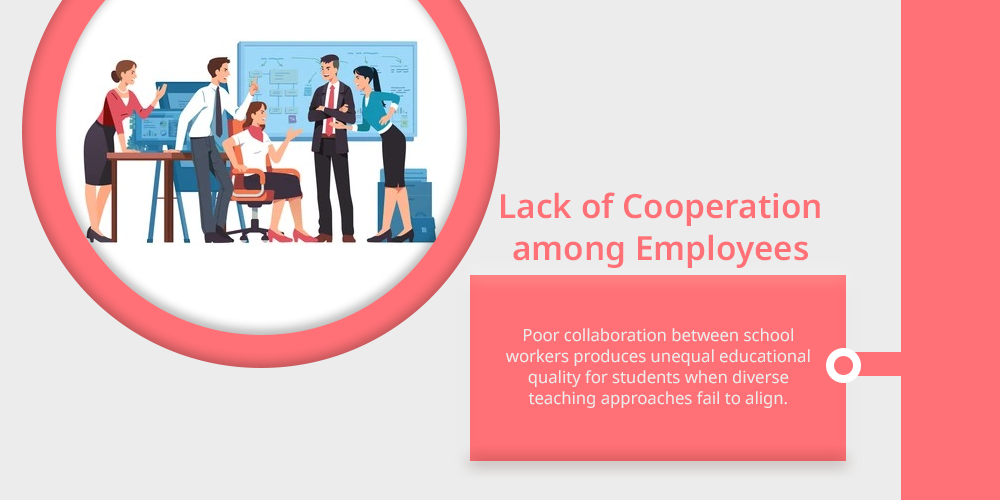
Poor collaboration between school workers produces unequal educational quality for students when diverse teaching approaches fail to align.
Therapists and support personnel are another pillars of support that kids need in inclusive education.
The success of inclusive education depends on strong collaboration between administrators, teachers, and counselors. The facilitator role of educators can bring huge differences in how a student learns and grows.
8. Cultural and Language Barriers
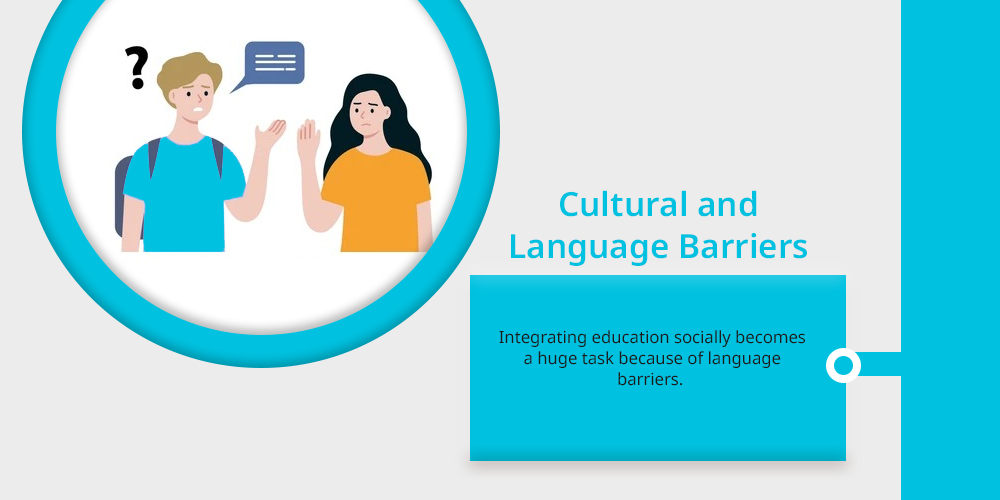
Integrating education socially becomes a huge task because of language barriers. Lack of cultural competence leads educators toward unintentionally missing or misreading student requirements.
Go through the article to manifest the best benefits of competency-based education resulting in personalized journeys for each student.
Special needs maintain challenges for educational settings because of their combination with classroom diversity. Special needs students face increased difficulties with instruction, and managing behaviors.
9. Rigid Curriculum
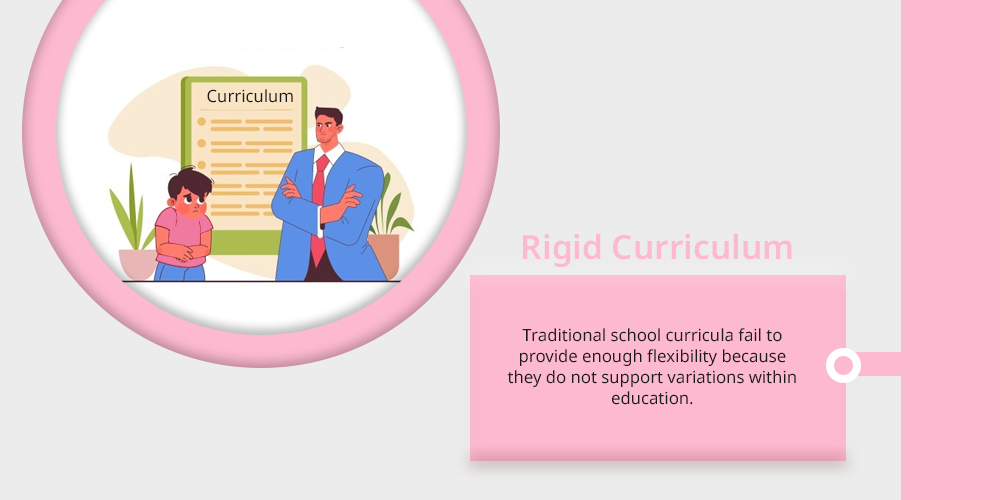
Traditional school curricula fail to provide enough flexibility because they do not support variations within education. Students who require modified or alternative learning approaches face difficulties because of this problem.
Students with disabilities experience alienation when their conditions are not accommodated within the curriculum. So, they fail to achieve maximum potential.
10. Courses on Inclusive Education
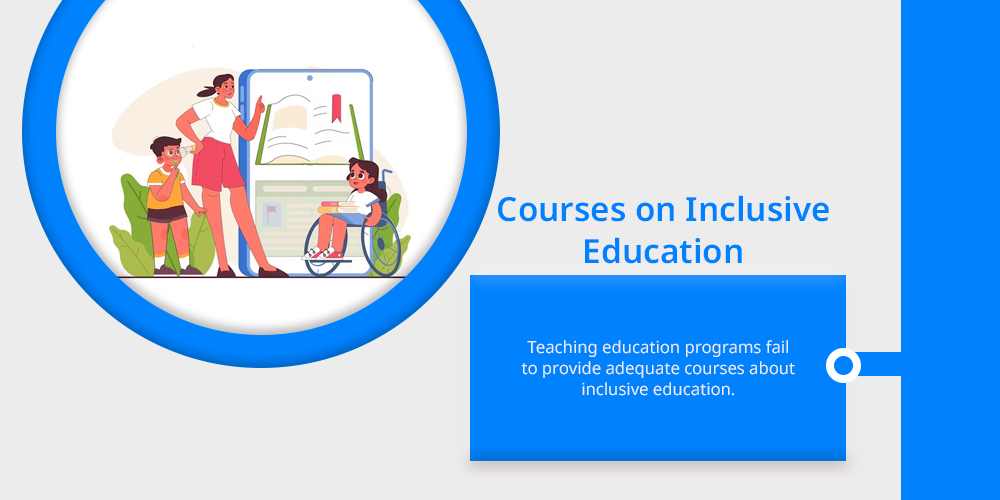
Teaching education programs fail to provide adequate courses about inclusive education. Entry to a new educator in the workforce occurs without preparedness in handling inclusive classroom settings.
Educational resources for inclusive education practices are minimal. Thus, making it difficult for teachers who already work in the field to adapt effectively.
Suggested Solutions for Issues in Inclusive Education
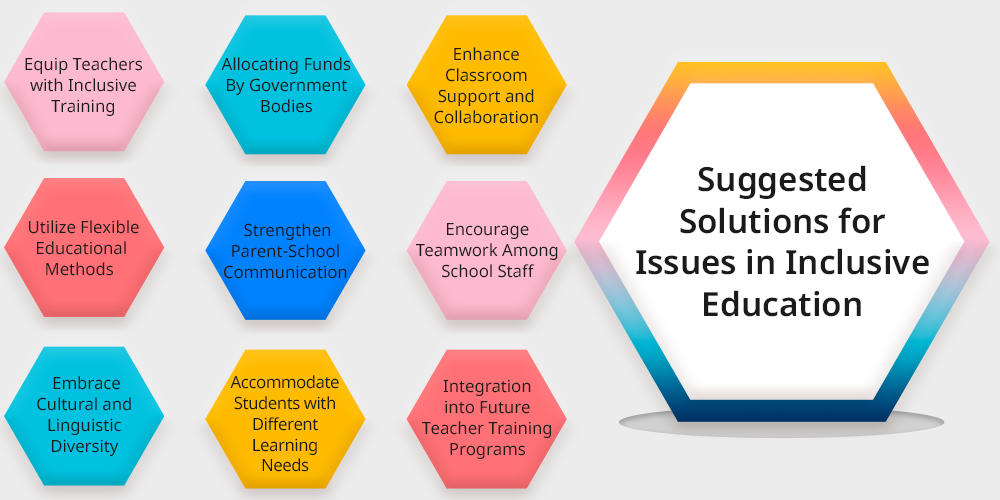
The challenges in inclusive education have solution pathways which can be achieved through strategic reforms.
Direct solutions exist for creating inclusive learning environments which support students better through the following approaches:
1. Equip Teachers with Inclusive Training
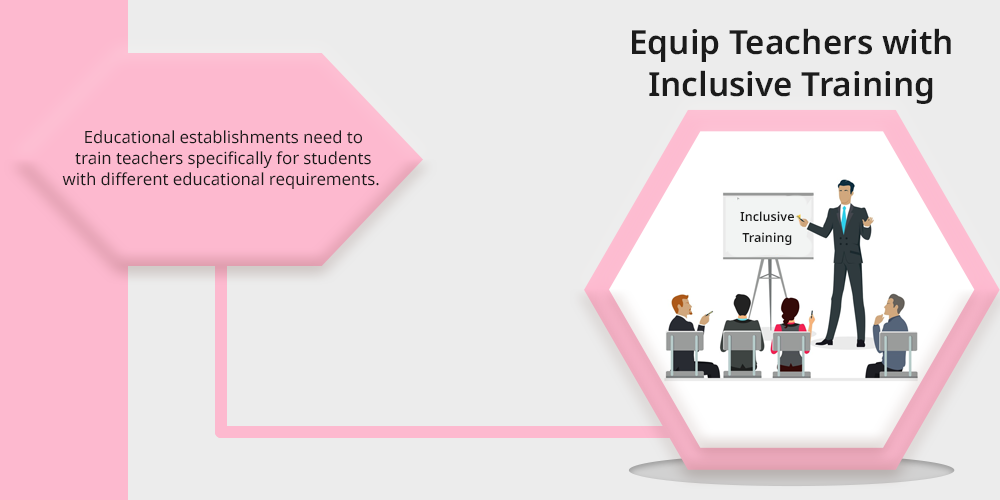
Education depends heavily on teachers because they support the foundation of inclusive learning. Educational establishments need to train teachers specifically for students with different educational requirements.
Teachers need to study learning disabilities, behavior management, adaptive teaching methods, and emotional intelligence training.
Update training should be available to teachers at their school to maintain familiarity with modern educational methods and tools.
Having complaints won’t do any good. If someone really wishes to be the best, here are the resources for professional development of teachers.
2. Allocating Funds By Government Bodies
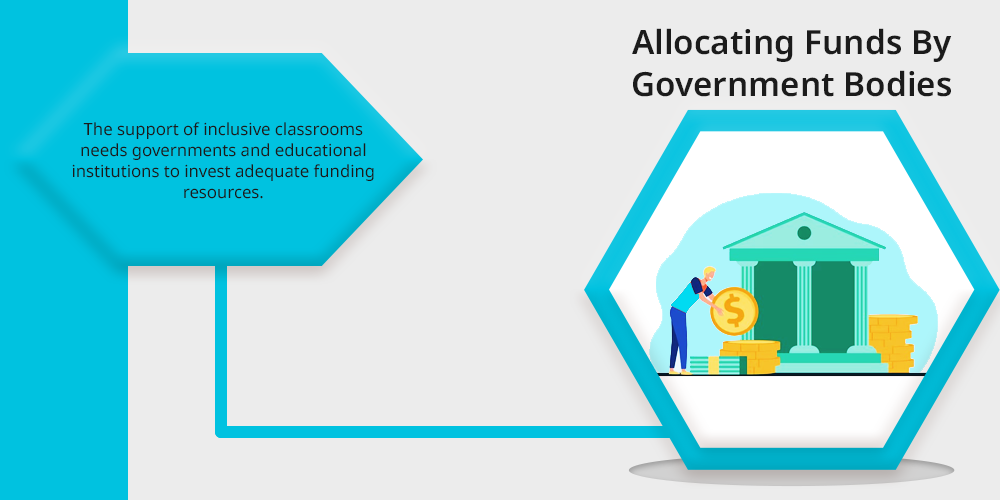
The support of inclusive classrooms needs governments and educational institutions to invest adequate funding resources.
The investment of funds is required to buy assistive technology along with developing accessible educational content.
Employing qualified specialists, and creating appropriate infrastructure features access to disabilities, and sensory-friendly spaces.
3. Enhance Classroom Support and Collaboration
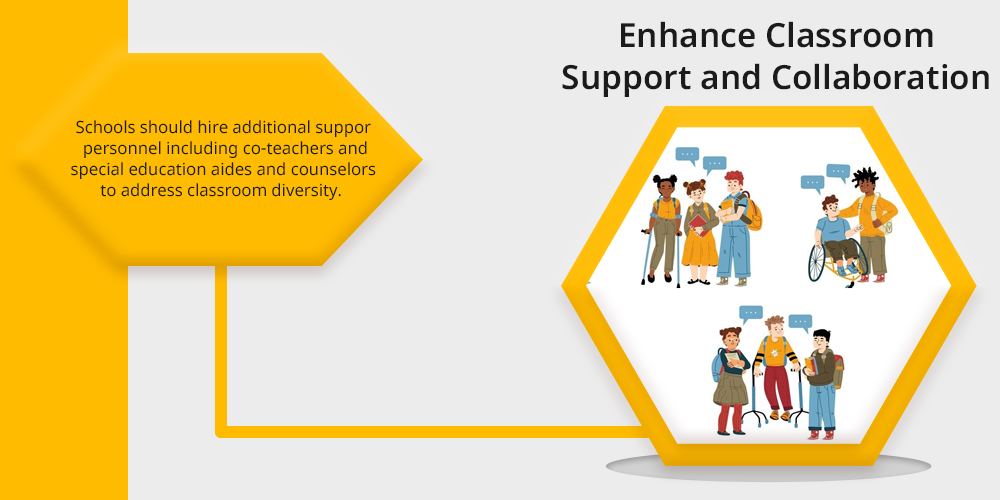
Schools should hire additional support personnel including co-teachers and special education aides and counselors to address classroom diversity.
A collaborative learning approach enables teachers to distribute workload and distribute student engagement so they can minimize their workload.
4. Utilize Flexible Educational Methods
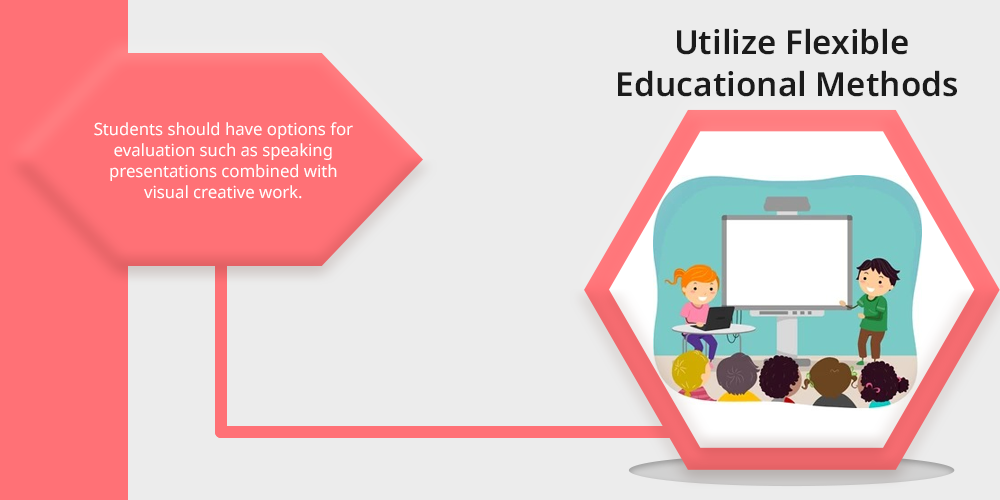
One single educational method cannot suit all students who require inclusion in the classroom. Each student should receive personalized learning through differentiation methods which match their preferred method.
Students should have options for evaluation such as speaking presentations combined with visual creative work.
Extra time for practical tasks that help them demonstrate their skills more effectively should also be incorporated.
5. Strengthen Parent-School Communication
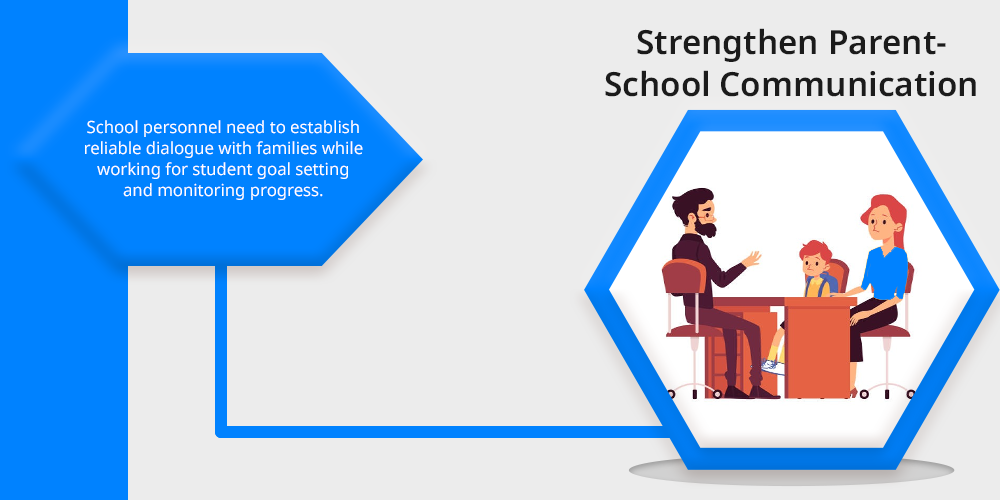
School personnel need to establish reliable dialogue with families while working for student goal setting and monitoring progress. Parents exercise essential functions for their children’s educational development.
Read more on the role of parents in a student’s life to assist their children through the inclusive journey of education.
Workshops together with informational sessions should be organized to address parental concerns and enhance trust in learning inclusively.
6. Encourage Teamwork Among School Staff
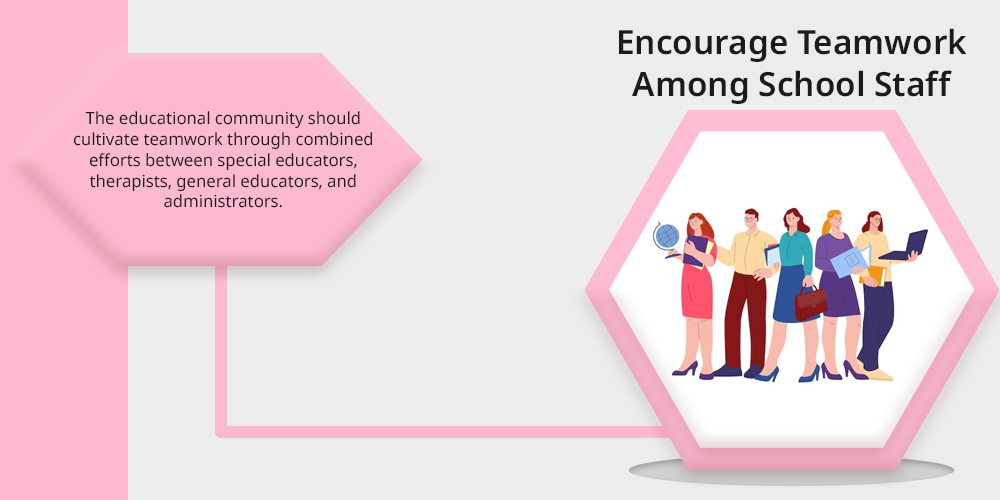
The educational community should cultivate teamwork through combined efforts between special educators, therapists, general educators, and administrators. A collaborative setting provides excellent conditions for inclusive education to grow.
Students receive better unified support through joint planning between staff team meetings and collaborative team responsibilities.
7. Embrace Cultural and Linguistic Diversity
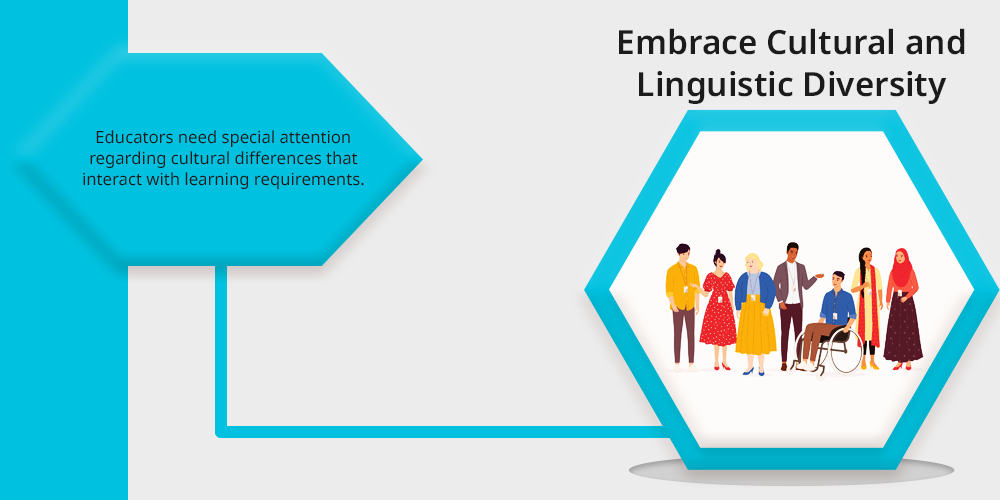
Educators need special attention regarding cultural differences that interact with learning requirements. Educational staff should receive cultural awareness training to develop better appreciation and respect for student backdrops.
Here is how to promote cultural awareness in the classroom for equipping teachers with the best assistance.
Schools should supply bilingual education and language transition initiatives which help non-native learners improve their academic accessibility.
8. Accommodate Students with Different Learning Needs
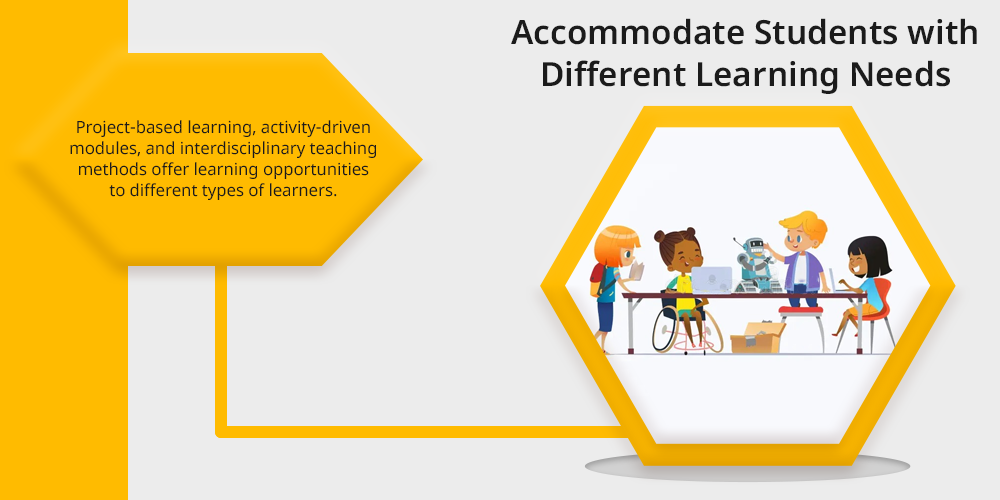
The curriculum system needs to provide teachers the power to modify teaching approaches according to their students’ individual characteristics and preferences.
Project-based learning, activity-driven modules, and interdisciplinary teaching methods offer learning opportunities to different types of learners. So that no pupil remains disadvantaged.
9. Integration into Future Teacher Training Programs
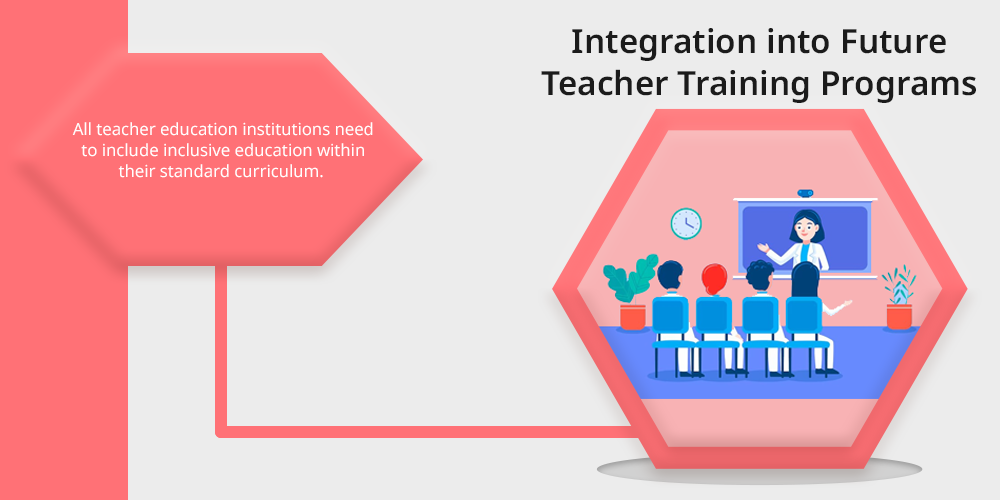
All teacher education institutions need to include inclusive education within their standard curriculum. Future educator training should include specialized studies, as well as inclusive classroom experience.
This builds their ability to support students in mainstream education from their first day of teaching.
Wrapping Up: Traverse into Inclusivity
The mission of inclusive education targets the establishment of equal learning chances across all groups. The achievement of this holistic education approach needs beyond policy transformations.
A societal transformation requires advanced instructor preparation, enough resources, along with collective commitment.
All students will benefit when we resolve the challenges described in this text along with students who need special educational support. Inclusive education transforms into an effective path for social transformation and academic achievements.
Implementing empathy, promoting diversity and investing in proper training tools will bring a new sunrise for every student.


